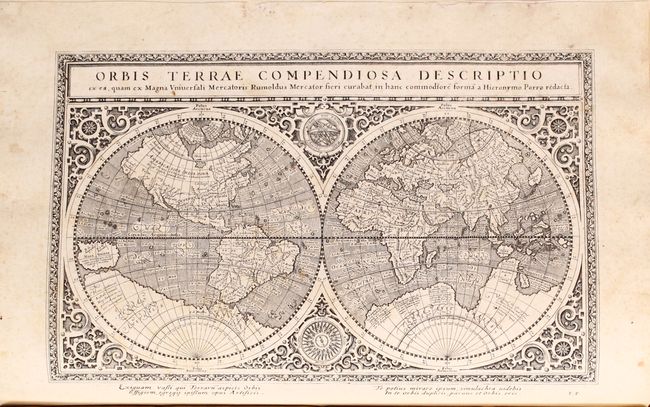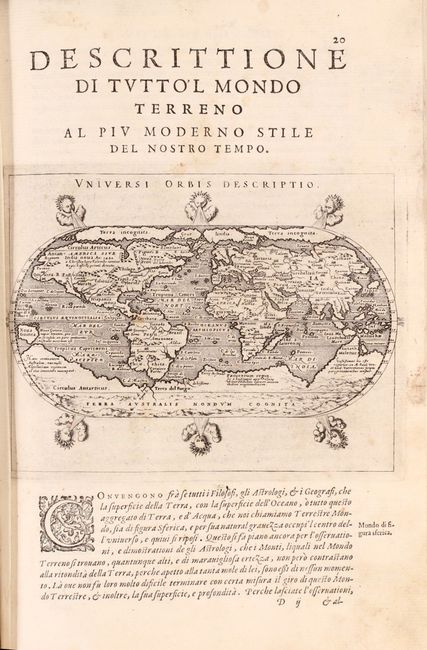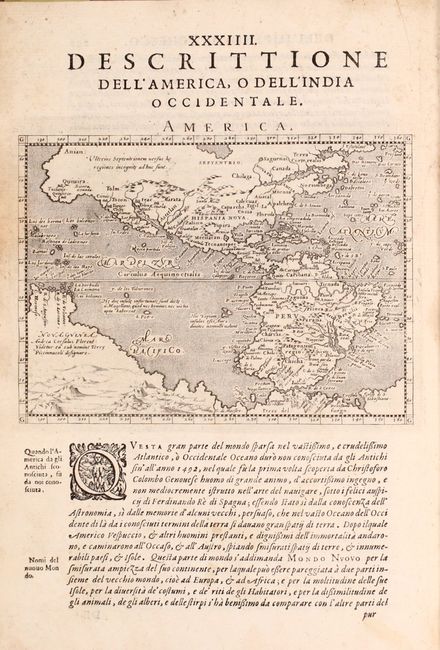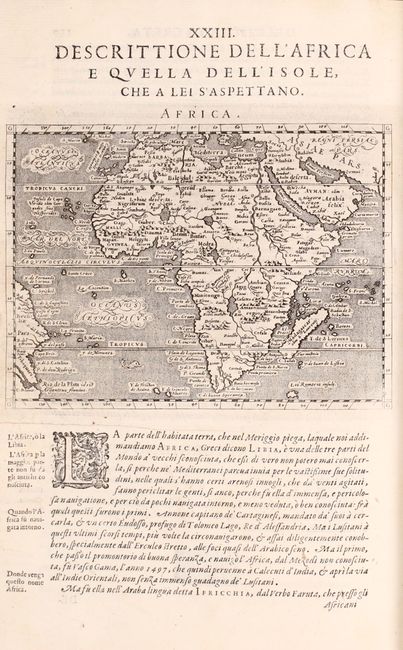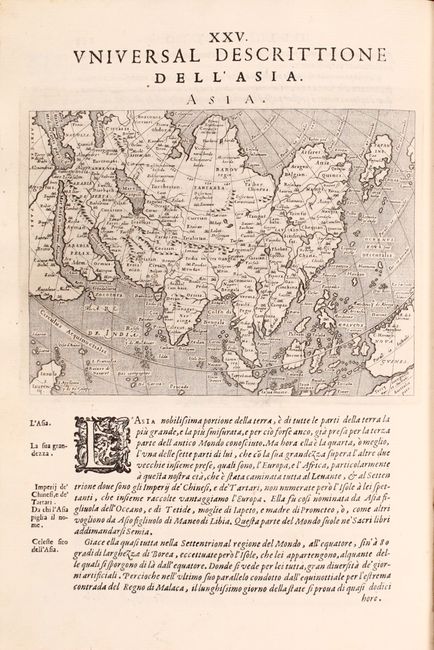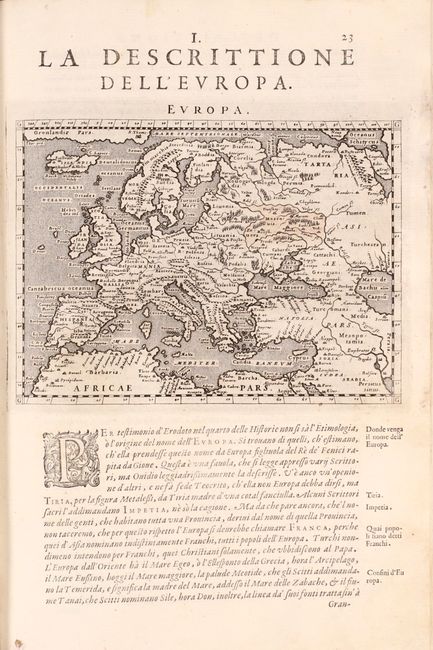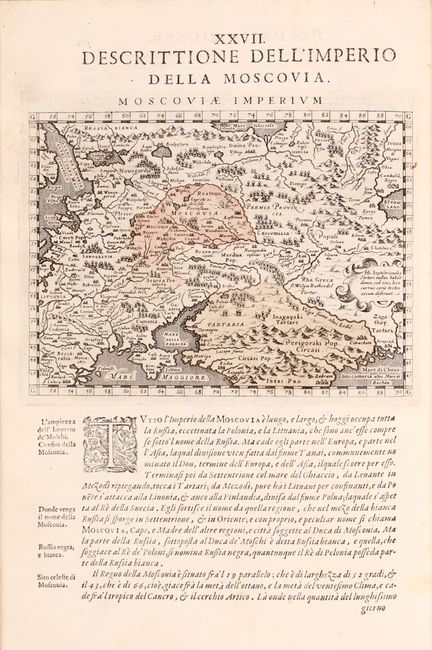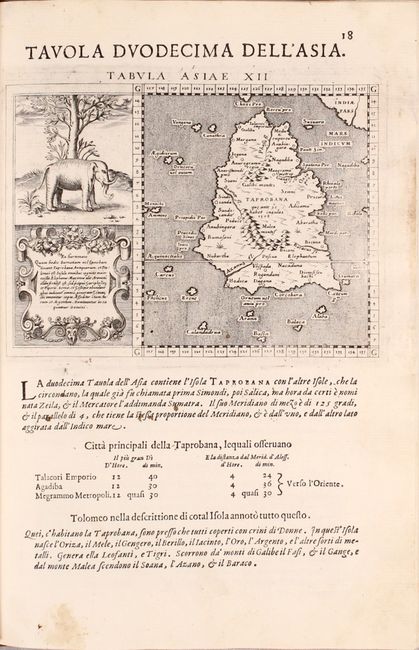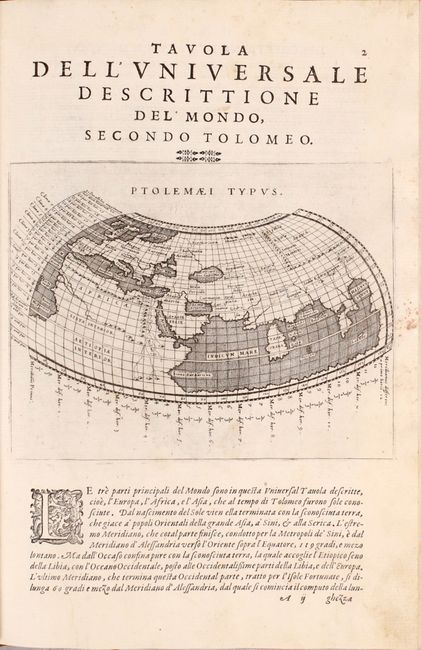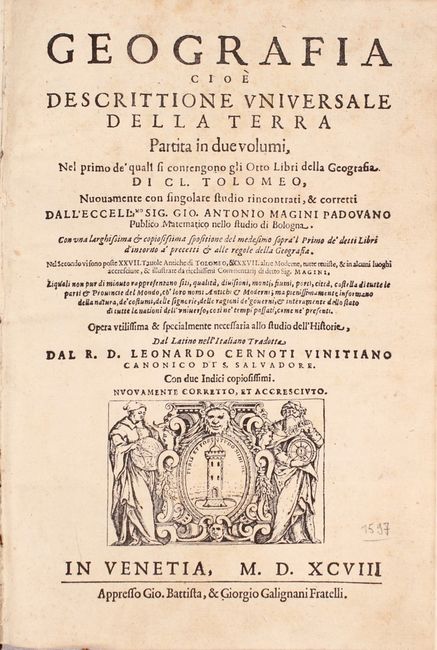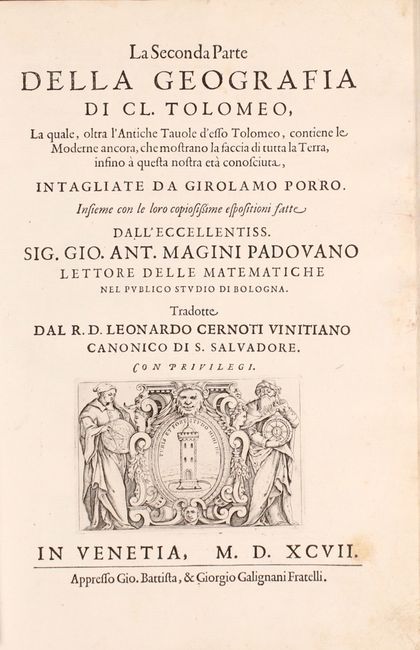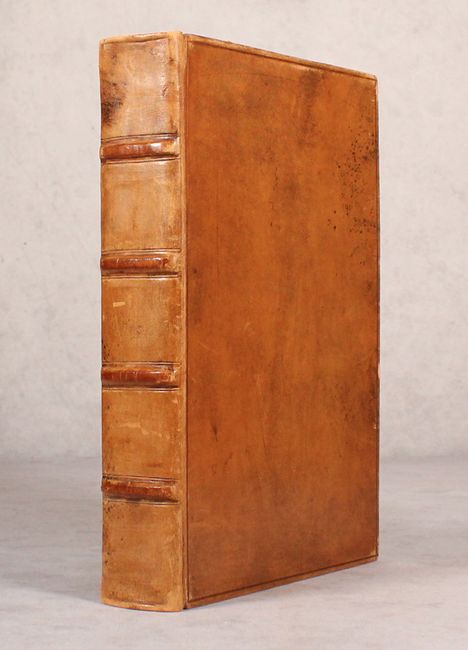Catalog Archive


Auction 169, Lot 774
An Attractive Italian Edition of Ptolemy's Geographia
"Geografia cioe Descrittione Universale della Terra Partita in Due Volumi...", Magini, Giovanni Antonio
Subject: Atlases
Period: 1598 (published)
Publication:
Color: Black & White
Size:
8.2 x 11.9 inches
20.8 x 30.2 cm
Download High Resolution Image
(or just click on image to launch the Zoom viewer)
(or just click on image to launch the Zoom viewer)
